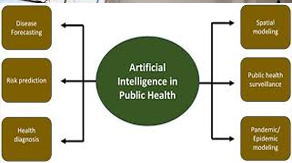Introduction
In recent elections, gender has emerged as a pivotal factor shaping political landscapes across the globe. This article explores how gender dynamics have evolved into a crucial fault line in electoral politics, influencing voter behavior, party strategies, and policy discussions. By examining historical context, cultural shifts, and contemporary implications, we will uncover the complexities of gender in electoral contexts.
Historical Context
The Roots of Gender in Politics
Historically, gender roles have profoundly influenced political participation. In many societies, women were relegated to domestic spheres, while men dominated public life. This dynamic began to shift in the late 19th and early 20th centuries as women’s suffrage movements gained momentum. Countries like New Zealand, the United States, and the UK began to recognize women’s rights to vote, marking a significant turning point in political engagement.
The Feminist Movements
The second-wave feminist movement of the 1960s and 1970s further propelled gender issues into the political arena. Advocates fought for reproductive rights, workplace equality, and against gender-based violence. This era not only reshaped societal norms but also influenced political platforms, compelling parties to address gender-related issues.
Institutional Changes
Legislative changes, such as the Equal Pay Act and Title IX in the United States, created frameworks that demanded gender equality in various sectors. These developments laid the groundwork for future electoral strategies, as parties began to recognize the importance of appealing to female voters.
The Role of Gender in Contemporary Politics
Gender as a Voting Behavior Factor
In recent elections, gender has become a salient predictor of voting behavior. Women and men often exhibit divergent political preferences, influenced by socialization, experiences, and societal expectations. Studies indicate that women are more likely to prioritize issues like healthcare, education, and social welfare, while men may focus on economic growth and national security.
The Gender Gap
The gender gap in voting has been a focal point in political analysis. This gap refers to the consistent difference in voting behavior between men and women. For instance, in the 2020 U.S. presidential election, women overwhelmingly supported Democratic candidate Joe Biden, while men leaned more towards Republican incumbent Donald Trump. Such disparities illustrate how gender can crystallize into distinct political identities.
The Impact of Female Candidates
The presence of female candidates has also reshaped electoral dynamics. Women running for office often bring different perspectives and priorities, which can resonate with female voters. Moreover, the candidacy of women can challenge traditional gender norms, encouraging greater political participation among women and inspiring future generations.
Media Representation
Media portrayal of gender in politics plays a significant role in shaping public perception. Coverage of female candidates often focuses on their appearance and personal lives rather than their policies or qualifications. This gendered media bias can affect how candidates are perceived and ultimately influence electoral outcomes.
The Intersectionality of Gender
Race and Class
Understanding gender in electoral contexts requires an intersectional lens. The experiences of women cannot be homogenized; race, class, and other identity factors intersect to shape political perspectives. For instance, Black, Latina, and Indigenous women often face unique challenges and priorities that differ from those of white women.
LGBTQ+ Perspectives
The rise of LGBTQ+ rights has also added layers to the discussion of gender in politics. The visibility of LGBTQ+ candidates and issues has mobilized various voter blocs and altered traditional party alignments. Many voters, particularly younger ones, prioritize inclusivity and representation, making gender identity a vital electoral issue.
Gender Issues in Policy Debates
Reproductive Rights
Reproductive rights remain a contentious issue that underscores the gender fault line in politics. Access to contraception, abortion, and comprehensive healthcare is often framed as a women’s issue, yet it has broader implications for family and societal well-being. Political parties must navigate these discussions carefully, as they can mobilize or alienate significant voter segments.
Economic Equality
Gender pay gaps and economic inequality are increasingly central to political discourse. Women, especially women of color, are disproportionately affected by wage disparities. Political candidates who prioritize economic justice and gender equity often garner support from women voters, illustrating how economic issues intersect with gender.
Violence Against Women
Domestic violence and gender-based violence are pressing concerns that shape electoral narratives. Advocacy for policies aimed at preventing violence against women can galvanize voter turnout and influence party platforms. Politicians who take a strong stance on these issues may gain significant traction among female voters.
Gender and Party Strategies
Targeting Female Voters
Recognizing the importance of female voters, political parties have adapted their strategies to better appeal to this demographic. Campaigns increasingly focus on issues that resonate with women, such as healthcare, education, and workplace rights. This targeted approach reflects a broader understanding of the electorate’s diversity and the necessity of addressing gender-specific concerns.
The Role of Grassroots Movements
Grassroots movements have played a vital role in amplifying gender issues in politics. Organizations like Women’s March, Me Too, and others have mobilized voters around gender equality, influencing party agendas and pushing candidates to prioritize women’s rights. These movements illustrate the power of collective action in shaping political discourse.
Global Perspectives
Gender in Global Politics
The gender fault line is not limited to any one country; it is a global phenomenon. In many nations, women’s political participation remains low due to cultural, legal, and institutional barriers. However, countries like Rwanda have made significant strides, with women occupying a substantial percentage of parliamentary seats, serving as a model for gender representation.
Comparative Analysis
Comparing gender dynamics across different political systems reveals diverse approaches to addressing gender issues. In some countries, gender quotas are implemented to ensure women’s representation in politics, while others rely on voluntary party initiatives. Understanding these variations can offer insights into effective strategies for enhancing gender equity in political representation.
Challenges and Future Directions
Backlash Against Gender Progress
Despite advancements, there is a growing backlash against gender equality in many parts of the world. Anti-feminist movements and traditionalist sentiments pose challenges to progress, often leveraging populist rhetoric to undermine gender rights. Political actors must navigate these tensions carefully, as they can significantly impact electoral outcomes.
The Need for Inclusive Policies
Moving forward, political parties must prioritize inclusive policies that address the diverse needs of women. This includes advocating for reproductive rights, economic justice, and protections against gender-based violence. Building coalitions across different identity groups can strengthen efforts to create a more equitable political landscape.
The Role of Education
Education will be crucial in shaping future generations’ understanding of gender in politics. Integrating gender studies into educational curricula can foster critical thinking and awareness among young voters, empowering them to engage meaningfully in the political process.
Conclusion
Gender has undeniably become a crucial fault line in contemporary electoral politics. As historical contexts, cultural shifts, and intersectional dynamics shape this landscape, political actors must recognize the complexities of gender issues. By addressing the diverse needs and perspectives of all voters, parties can build more inclusive platforms that resonate with the electorate. Understanding and navigating this gender dynamic will be vital for future electoral success, shaping not only policies but the very fabric of democratic engagement.
In summary, the evolution of gender as a key electoral issue reflects broader societal changes and underscores the importance of continued advocacy for gender equality in politics. As we move forward, the challenge will be to harness this momentum and foster a political environment that is truly representative of all citizens.



